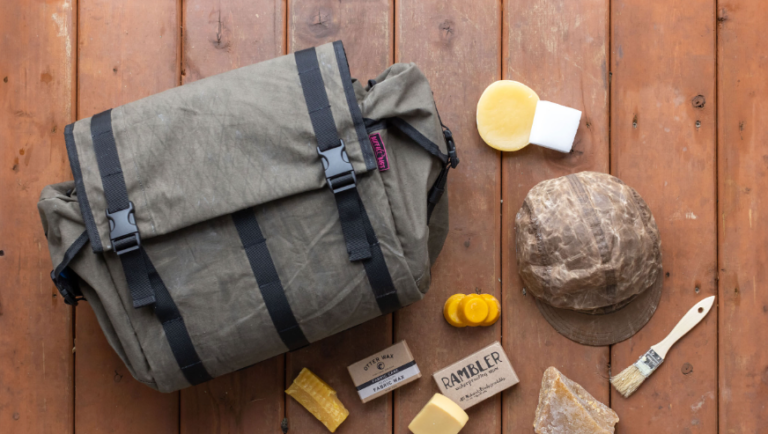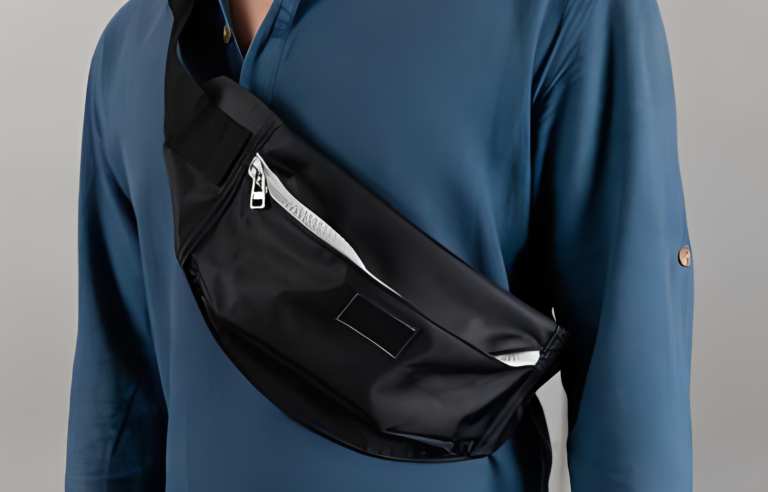How to Repair a Bag | Extend the Lifespan of Your Favorite Accessory
As we carry our bags day in and day out, they inevitably experience wear and tear. From torn corners to broken handles, these damages can be a cause for concern. But fret not! With the right knowledge and techniques, you can easily repair your beloved bag and make it look as good as new. In this comprehensive guide, we will walk you through the process of repairing various types of bags and How to Repair a Bag, including canvas, leather, and designer handbags. So, let’s dive in and become bag repair heroes!
Bags are more than just fashion accessories; they are our trusted companions that carry our essentials. However, over time, they can develop various issues such as torn fabric, broken handles, or damaged hardware. But before you consider discarding your beloved bag, it’s worth exploring repair options that can extend its lifespan and save you money. In this guide, we will provide step-by-step instructions on how to repair different types of bags, including canvas, leather, and designer handbags. So, let’s get started!
Materials | How to Repair a Bag
Before we delve into the repair techniques, it’s essential to understand the materials commonly used in bags and how to care for them properly. Whether you own a canvas tote, a luxurious leather handbag, or a trendy vegan leather accessory, each material requires specific care to maintain its quality and appearance. Let’s explore some useful tips for each material.
Related: How to Make a Leather Bag
Canvas Care Tips
Canvas bags are known for their durability and versatility. To keep your canvas bag in excellent condition, follow these care tips:
- Clean the bag regularly using a soft-bristled brush or a damp cloth.
- Avoid using detergents on waxed canvas bags to prevent damage to the wax finish.
- Keep the bag away from direct sunlight to avoid discoloration.
- Protect the bag from water and other liquids to prevent stains.
- Store the bag in a dry place to prevent mold growth.
Leather Care Tips
Leather bags exude elegance and sophistication. To maintain the beauty of your leather bag, follow these care tips:
- Avoid exposing the bag to direct sunlight, as it can cause discoloration and damage the leather.
- Keep the bag away from water and other liquids, as they can leave stains and damage the leather.
- Clean the bag with a soft, dry cloth and avoid using harsh chemicals or abrasive materials.
- Apply a leather conditioner regularly to keep the leather soft and supple.

Vegan Leather Care Tips
Vegan leather, also known as faux leather or synthetic leather, requires specific care to ensure its longevity. Here are some tips for caring for your vegan leather bag:
- Clean the bag with a soft cloth and mild soap solution.
- Avoid using harsh chemicals or abrasive materials that can damage the surface.
- Keep the bag away from direct sunlight to prevent fading.
- Store the bag in a cool, dry place to maintain its shape and prevent mold growth.
By following these care tips, you can keep your bag in excellent condition and minimize the need for repairs. However, if your bag does require repair, the following sections will guide you through the process.
Repairing Canvas Bags
Canvas bags are known for their durability, but they can still suffer from tears, ripped fabric, or damaged straps. Here’s how you can address these common issues:
Dealing with Small Tears
Small tears in canvas bags can occur when they catch on sharp objects or experience excessive wear and tear. To repair small tears, follow these steps:
- Clean the area around the tear using a soft brush or a damp cloth.
- Apply a small amount of fabric glue or adhesive to the torn edges.
- Press the edges together and hold them firmly for a few minutes to allow the glue to bond.
- Let the glue dry completely before using the bag.
Fixing Ripped Fabric
If your canvas bag has a larger rip or a section of ripped fabric, you can patch it up using the following method:
- Clean the area around the rip with a soft brush or a damp cloth.
- Cut a fabric patch slightly larger than the rip.
- Apply fabric glue or adhesive to the edges of the patch.
- Press the patch firmly onto the ripped area, aligning the edges.
- Allow the glue to dry completely before using the bag.
Repairing Bag Straps
Bag straps can wear out or break over time due to frequent use. To repair a damaged or broken strap, you can follow these steps:
- Assess the extent of the damage. If the strap is partially torn, you may be able to repair it by reinforcing it with fabric glue or adhesive.
- Apply a small amount of fabric glue or adhesive to the torn or weakened area of the strap.
- Press the edges together and hold them firmly for a few minutes to allow the glue to bond.
- Let the glue dry completely before using the bag.
By following these repair techniques, you can restore the functionality and appearance of your canvas bag.
Repairing Leather Bags
Leather bags are timeless and luxurious, but they can develop scratches, torn corners, or broken handles over time. Here’s how you can address these issues and restore your leather bag:
Treating Scratches and Scuffs
Scratches and scuffs are common occurrences on leather bags, but they can be easily treated with the following steps:
- Clean the affected area with a soft, dry cloth to remove any dirt or debris.
- Apply a small amount of leather conditioner to the scratched or scuffed area.
- Gently rub the conditioner into the leather using circular motions.
- Wipe off any excess conditioner with a clean cloth.
- Repeat the process if necessary until the scratches or scuffs fade.
Fixing Torn Corners
Torn corners can be unsightly and compromise the structural integrity of your leather bag. To fix torn corners, follow these steps:
- Clean the torn area with a soft, dry cloth.
- Apply a small amount of leather glue or adhesive to the torn edges.
- Press the edges together and hold them firmly for a few minutes to allow the glue to bond.
- Wipe off any excess glue with a clean cloth.
- Let the glue dry completely before using the bag.
Repairing Broken Handles
Broken handles can render a leather bag unusable. To repair a broken handle, you can follow these steps:
- Assess the extent of the damage. If the handle is partially detached, you may be able to repair it by reinforcing it with leather glue or adhesive.
- Clean the area around the broken handle with a soft, dry cloth.
- Apply a small amount of leather glue or adhesive to both the handle and the bag.
- Press the handle firmly onto the bag, aligning it with the original position.
- Hold the handle in place for a few minutes to allow the glue to bond.
- Wipe off any excess glue with a clean cloth.
- Let the glue dry completely before using the bag.
Restoring Zippers and Hardware
Zippers and hardware on leather bags can become worn or damaged over time. To restore them, follow these steps:
- Clean the zipper or hardware with a soft, dry cloth to remove any dirt or debris.
- Apply a small amount of lubricant, such as beeswax or candle wax, to the zipper to help it slide more easily.
- If the zipper is still not functioning properly, consider replacing it with a new one or seek professional repair services.
- For damaged or tarnished hardware, use a specialized metal cleaner or polish to restore its shine.
By following these repair techniques, you can revive your leather bag and enjoy its timeless elegance for years to come.
Repairing Designer Handbags
Designer handbags are often crafted from luxurious materials and require extra care when it comes to repairs. Here’s what you need to know about repairing your precious designer bags:
Common Repair Issues
Designer handbags, ranging from Hermès to Gucci, can experience a variety of issues, including torn corners, broken handles, and discolored spots. Here are some solutions for these common problems:
- Torn Corners: For torn corners, you can use a leather adhesive to patch the damaged area. If the damage is extensive, consult a specialist or a professional handbag repair service.
- Broken Handles: To fix a broken handle, use a leather glue or adhesive to reattach it to the bag. If the handle is beyond repair, consider replacing it or seeking professional help.
- Discolored Spots: Discoloration can occur due to various factors. If the discoloration is minor, you can try using a leather cleaner and conditioner to restore the bag’s original color. For heavily discolored spots, consult a professional repair service.
DIY vs. Professional Repair
When it comes to repairing designer handbags, you have two options: DIY or professional repair. While DIY repairs can be cost-effective, they may not always yield the best results, especially for intricate designer bags. Professional repair services offer expertise and specialized techniques to ensure high-quality repairs. Consider the extent of the damage, your budget, and your skill level before deciding which option to choose.

Finding a Handbag Repair Service
If you decide to opt for professional repair services, it’s crucial to choose a reputable and experienced service provider. Look for reviews, ask for recommendations from fellow bag enthusiasts, and inquire about their expertise in repairing designer handbags. It’s essential to entrust your precious bag to skilled hands to ensure a successful repair.
By following these guidelines, you can take care of your designer handbags and address any repair issues effectively.
Tips and Tricks for Successful Bag Repairs
Repairing a bag requires the right tools, techniques, and preventive measures to ensure successful outcomes. Here are some tips and tricks to help you achieve excellent repair results:
Related; How to Make a Garment Bag
Choosing the Right Tools and Supplies
When repairing bags, make sure you have the following tools and supplies on hand:
- Fabric glue or adhesive for canvas bags
- Leather conditioner for leather bags
- Leather glue or adhesive for repairing leather bags
- Lubricant, such as beeswax or candle wax, for zippers
- Specialized metal cleaner or polish for hardware
- Needles and thread for stitching repairs
- Soft-bristled brush or damp cloth for cleaning
Having these tools and supplies readily available will make the repair process more convenient and efficient.
Testing the Repair Techniques
Before applying any adhesive or cleaner to your bag, it’s crucial to test it in an inconspicuous area to ensure compatibility and prevent damage. This step is especially important for designer bags or bags made from delicate materials. By conducting a small test, you can determine the effectiveness of the product and its impact on the bag’s appearance.
Taking Preventive Measures
To minimize the need for repairs in the future, consider taking preventive measures to protect your bag:
- Avoid overstuffing your bag, as it can strain the seams and handles.
- Use bag organizers or pouches to separate and protect your belongings.
- Keep your bag away from sharp objects or abrasive surfaces.
- Store your bag in a dust bag or a soft cloth to prevent dust and scratches.
- Rotate your bags regularly to prevent excessive wear on a single bag.
By implementing these preventive measures, you can prolong the lifespan of your bags and reduce the likelihood of future repair needs.
Frequently Asked Questions (FAQs)
Can I repair a torn canvas bag without using glue or adhesive?
How often should I apply leather conditioner to my leather bag?
Can I repair a broken zipper on my own?
Should I attempt to repair a designer handbag on my own?
How can I find a reputable handbag repair service near me?
Conclusion
Repairing a bag not only extends its lifespan but also allows you to continue enjoying your favorite accessory for years to come. Whether you own a canvas tote, a luxurious leather handbag, or a designer masterpiece, understanding the materials and applying the right repair techniques is essential. By following the step-by-step instructions and tips provided in this guide, you can become a bag repair hero and restore the beauty and functionality of your beloved bags. Remember to care for your bags regularly to prevent extensive damage and always prioritize professional repair services for complex repairs. Happy bag repairing!







